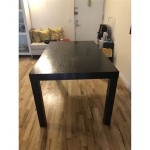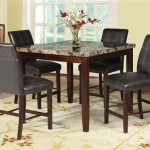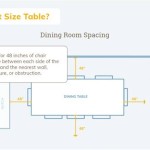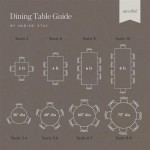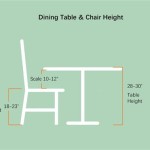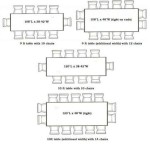Area Rug Size for Dining Room Table
Choosing the right area rug for a dining room involves more than just aesthetics. The rug plays a crucial role in defining the space, anchoring the furniture, and enhancing the overall dining experience. One of the most important factors to consider is the rug size relative to the dining table. An appropriately sized rug provides comfort, protects the flooring, and contributes to a balanced and visually appealing room.
The Golden Rule: Add 24-36 Inches
The fundamental rule for selecting a dining room rug is to allow for ample space between the edge of the table and the edge of the rug. This space typically ranges from 24 to 36 inches. This extra space serves several purposes. It allows diners to comfortably pull out their chairs without the chair legs catching on the edge of the rug. It also creates a visual frame around the dining set, defining the dining area within the larger room.
Measuring Your Dining Table
Before shopping for a rug, accurately measure the length and width of your dining table. This measurement forms the basis for determining the appropriate rug size. Add the desired overhang (24-36 inches) to both the length and width of the table to arrive at the minimum rug dimensions. For example, a 60-inch wide and 84-inch long table would require a rug that is at least 84 inches (60 + 24) wide and 108 inches (84 + 24) long, using the minimum overhang.
Considering Chair Space with Extended Legs
A critical aspect often overlooked is accounting for chairs when they are pulled out from the table. The 24-36 inch rule ensures adequate space for chairs in their usual position, but extended legs require additional consideration. Measure the distance from the table edge to the back legs of a chair when fully extended. This measurement should fit comfortably within the rug's dimensions. If the chair legs extend beyond the rug when pulled out, consider increasing the rug size accordingly. This prevents chairs from wobbling or getting stuck on the rug's edge.
Room Size and Shape
The dimensions of the dining room itself play a significant role in determining the appropriate rug size. A large rug in a small room can overwhelm the space, while a small rug in a large room can appear lost and insignificant. Ideally, the rug should leave a consistent border of flooring exposed around its perimeter. This border helps to visually anchor the rug within the room and creates a sense of proportion. In larger dining rooms, consider a larger rug that extends beyond the immediate dining area to define the space more effectively. The shape of the room can also influence rug choice. A rectangular rug typically works best in rectangular rooms, while a square or round rug may be more suitable for square or circular rooms.
Rug Material and Pile Height
While size is paramount, the rug's material and pile height also deserve consideration in a dining setting. A low-pile rug is generally preferred for dining areas, as it makes it easier to slide chairs in and out and prevents food particles from becoming trapped. Durable, stain-resistant materials are also essential for withstanding spills and regular foot traffic. Materials like wool, polypropylene, or synthetic blends offer good durability and stain resistance. Natural fibers, such as jute or sisal, offer a more casual and textural look but may require more care and cleaning.
Visual Balance and Aesthetics
Ultimately, the rug should complement the overall design of the dining room. Consider the existing furniture, wall colors, and other decorative elements when selecting a rug. Choose a rug that complements the style of the dining table and chairs, creating a cohesive and harmonious look. Patterned rugs can add visual interest and hide spills, while solid-colored rugs offer a more classic and understated appearance. The rug's color should complement or contrast with the existing décor, enhancing the room's overall aesthetic.
Placement and Centering
Once the appropriate rug size is determined, proper placement is crucial. The rug should be centered under the dining table, ensuring equal overhang on all sides. This creates a balanced and symmetrical look. Use rug pads to prevent slipping and protect both the rug and the flooring underneath. A properly placed rug not only enhances the visual appeal of the dining room but also contributes to the overall comfort and functionality of the space.

Expert Advice How To Design A Perfectly Scaled Dining Room Rug Size Layout Carpet

How To Choose The Right Rug Size

How To Pick Rug Sizes Design Guide Dining Room Size Living Table

Rug Sizes For Dining Tables 2 4 6 8 10 Seats Pictures

How To Choose The Right Dining Room Rug Size

Rug Sizes For Your Space The Home

Rug Size Guide Ballard Designs

Rug Size Guide Ballard Designs

Rug Size Guide Choose The Right

Everything You Need To Know About Dining Rooms Your Guide Getting The Scale Just Right Kayla Simone Home

